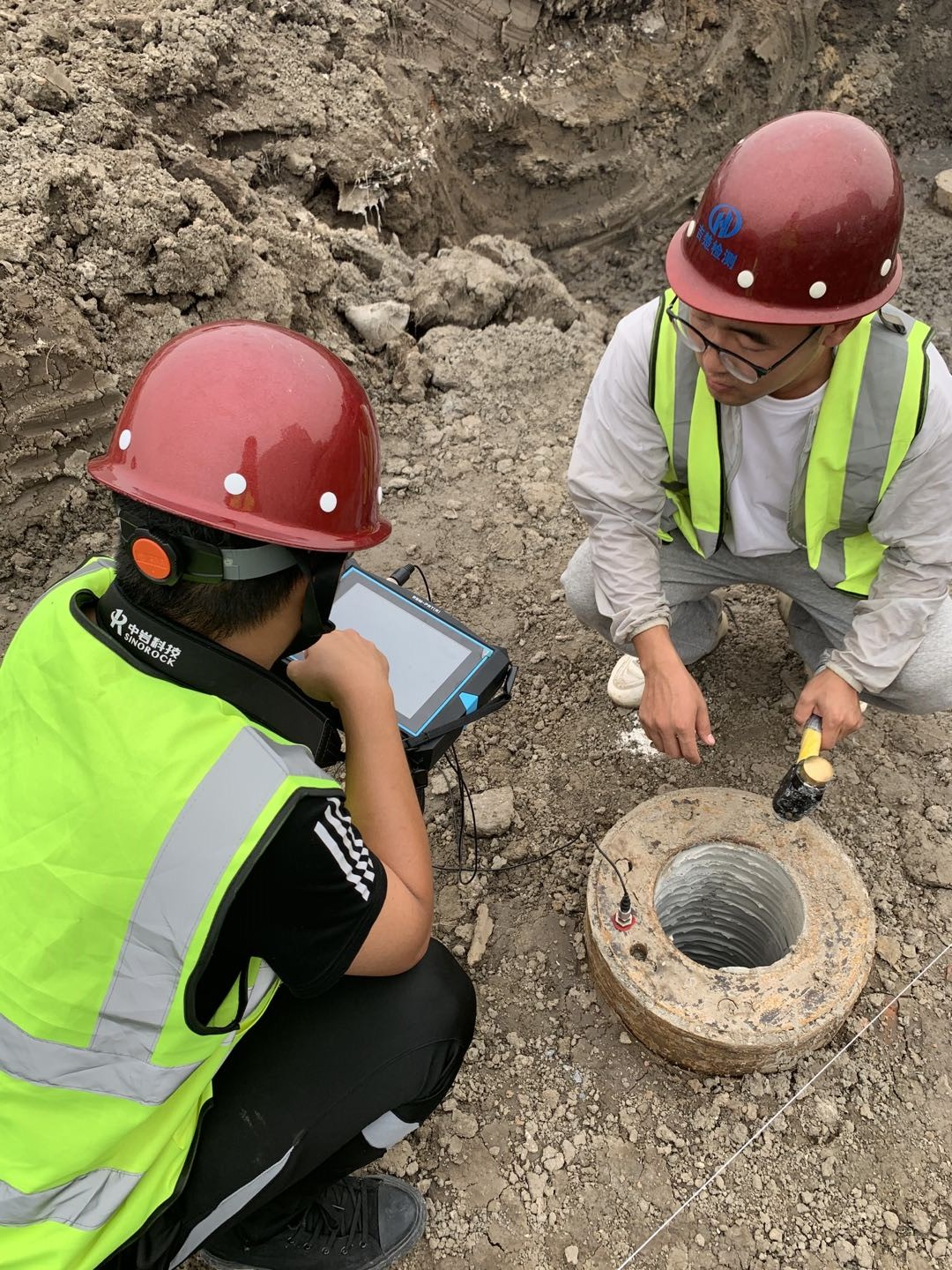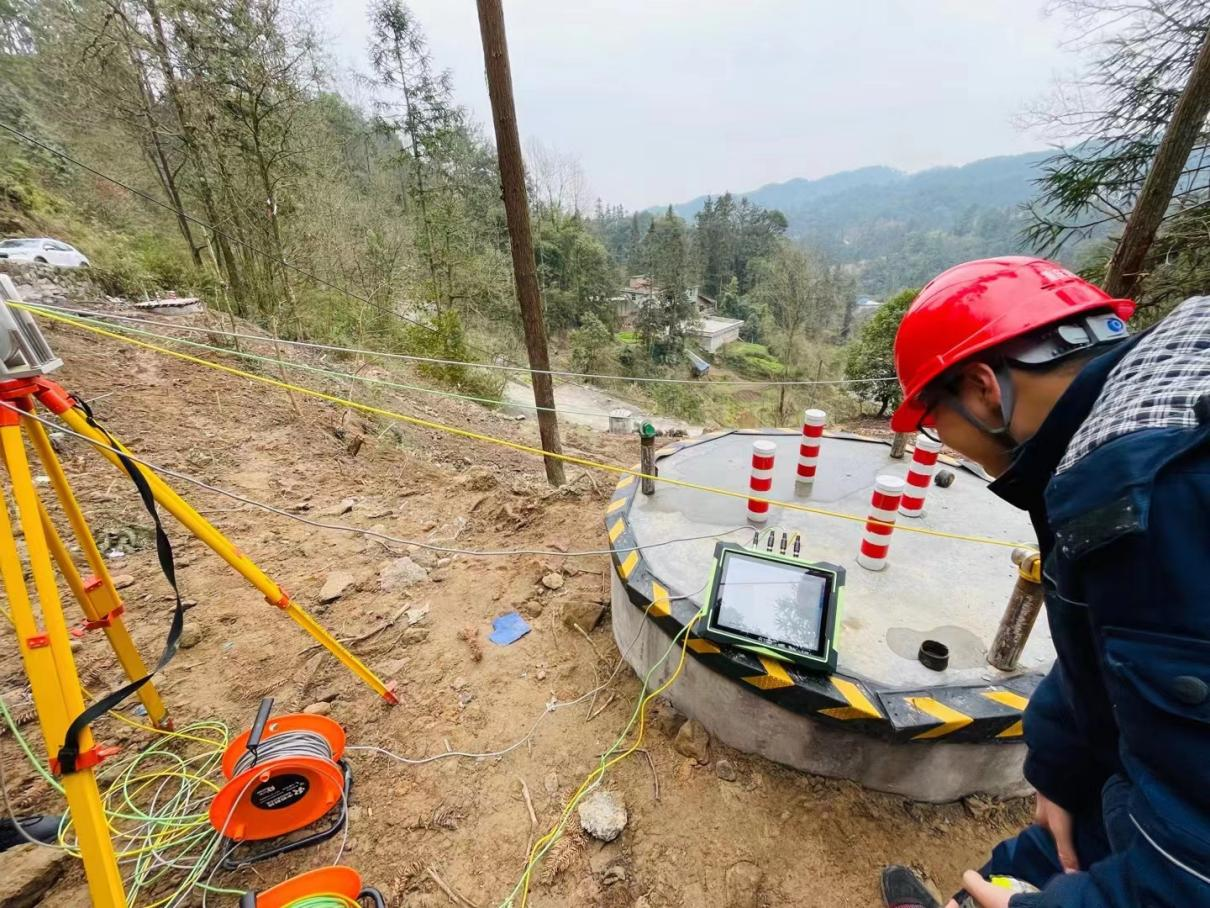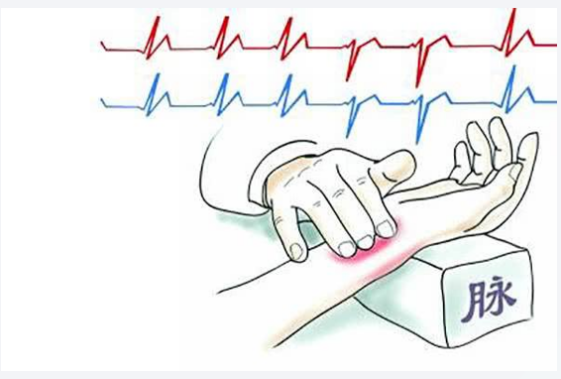The comparison between PIT and CSL test method
Description
With the expansion of the application field of concrete pile foundation, the integrity test of foundation piles has become an important content in the quality test of foundation piles. If design is likened to the soul of building products, then construction quality, as one of the core of building project management, is the guarantee of soul continuity and the key to determining building safety performance. PIT and CSL test are the most commonly used methods for pile integrity testing in on-site testing. The technology is mature and the effect is significant. So what are the similarities and differences between these two test methods, and how should we choose them during on-site testing?
The similarities between the two test methods
From a macro perspective, both the acoustic transmission method and the PIT belong to the semi direct method, which is based on on-site prototype tests, combined with some theoretical assumptions and engineering practices, and comprehensive analysis to ultimately determine the test project results. Both rely on changes in some physical parameters to infer the integrity of the pile body. Like other physical test methods, there are multiple solutions. For example, defects such as voids, mud inclusions, segregation, and secondary pouring surfaces in the pile body all cause changes in relevant parameters. Therefore, it is difficult to determine exactly what kind of defect they are based solely on the measured curve. Both must be comprehensively judged in conjunction with core sampling, excavation verification, and on-site construction conditions.
From a microscopic perspective, both the acoustic transmission method and the low strain reflection method use longitudinal waves, studying mechanical waves caused by particle motion. However, the acoustic transmission method studies the vibration of particles at the cross-section of the pile body, while the low strain method studies the vibration of particles at the contact point between the pile top and the sensor.
Both acoustic transmission method and low strain reflection method have the characteristics of lightweight equipment, simple operation, high test efficiency, low cost, and mature technology. Therefore, they are widely used as survey methods in engineering test.
 PIT for on-site test
Test instrument: Sinorock RSM-PRT (R) Pile Low Strain Integrity Tester
PIT for on-site test
Test instrument: Sinorock RSM-PRT (R) Pile Low Strain Integrity Tester
 CSL for on site test
Test instrument: Sinorock RSM-SY8 (C) ultrasonic CT Tomoghraph Tester
Differences between two test methods
1、 Differences in test principles
The PIT treats a pile as a one-dimensional linear elastic rod, and stress waves reflect in the concrete "rod" at the point where the wave impedance of the pile changes, forming a reflection wave. By studying and analyzing the reflection wave, the integrity of the pile body can be determined.
The CSL test evaluates the quality of concrete and determines the integrity of the pile body by observing changes in some acoustic parameters after sound waves penetrate the concrete. The integrity of the pile body is mainly determined by the correspondence between the acoustic parameters of the tested concrete and the quality of the concrete.
To put it simply, if we compare the quality test of piles to going to the hospital for a physical examination, the PIT is similar to the pulse diagnosis in traditional Chinese medicine, while the CSL test is more similar to doing an ultrasound examination.
CSL for on site test
Test instrument: Sinorock RSM-SY8 (C) ultrasonic CT Tomoghraph Tester
Differences between two test methods
1、 Differences in test principles
The PIT treats a pile as a one-dimensional linear elastic rod, and stress waves reflect in the concrete "rod" at the point where the wave impedance of the pile changes, forming a reflection wave. By studying and analyzing the reflection wave, the integrity of the pile body can be determined.
The CSL test evaluates the quality of concrete and determines the integrity of the pile body by observing changes in some acoustic parameters after sound waves penetrate the concrete. The integrity of the pile body is mainly determined by the correspondence between the acoustic parameters of the tested concrete and the quality of the concrete.
To put it simply, if we compare the quality test of piles to going to the hospital for a physical examination, the PIT is similar to the pulse diagnosis in traditional Chinese medicine, while the CSL test is more similar to doing an ultrasound examination.

 2、 Differences in wavelength
The stress wave length of the PIT is measured in meters, and the stress wave propagates along the longitudinal axis of the foundation pile. Therefore, it is required that the pile length be greater than the pile diameter, generally at least 10 times the pile diameter. At this time, the measured wave velocity is approximately the wave velocity of the pole.
The wavelength magnitude of the CSL test is calculated in centimeters, with the transverse profile of the pile as the direction of wave propagation. At this time, the measured wave velocity can be roughly regarded as the body wave velocity.
3、 Differences in wave speed
The wave velocity obtained by the PIT is one-dimensional, assuming that the ratio of pile diameter to pile length is small, and its wave velocity is related to the elastic modulus of the pile body and the density of the medium. Namely
2、 Differences in wavelength
The stress wave length of the PIT is measured in meters, and the stress wave propagates along the longitudinal axis of the foundation pile. Therefore, it is required that the pile length be greater than the pile diameter, generally at least 10 times the pile diameter. At this time, the measured wave velocity is approximately the wave velocity of the pole.
The wavelength magnitude of the CSL test is calculated in centimeters, with the transverse profile of the pile as the direction of wave propagation. At this time, the measured wave velocity can be roughly regarded as the body wave velocity.
3、 Differences in wave speed
The wave velocity obtained by the PIT is one-dimensional, assuming that the ratio of pile diameter to pile length is small, and its wave velocity is related to the elastic modulus of the pile body and the density of the medium. Namely
 Where,E———Elastic modulus;ρ———Medium density.
The wave velocity obtained by the acoustic transmission method is a three-dimensional wave velocity, and its magnitude is related to the properties of the solid medium and the boundary conditions of the solid medium. Namely
Where,E———Elastic modulus;ρ———Medium density.
The wave velocity obtained by the acoustic transmission method is a three-dimensional wave velocity, and its magnitude is related to the properties of the solid medium and the boundary conditions of the solid medium. Namely
 Where, E - elastic modulus; μ——— Poisson's ratio of the medium; ρ——— Medium density.
The Poisson's ratio of concrete is generally 0.2, so the wave velocity obtained by the PIT is generally smaller than that obtained by the acoustic transmission method.
4、 Differences in test range
The method chosen may vary depending on the length of the pile. The impact of factors such as the degree of impact, soil properties around the pile, and coupling agents on low strain during the testing process can cause certain energy loss during wave propagation. If the cross-section of the pile changes significantly, it may be difficult to determine subsequent pile signals due to the influence of reflected signals. If the length of the tested pile is too long, there may be a situation where the stress wave has not returned to the pile top or even reached the pile bottom, and the energy has already been completely dissipated. When the signal received by the instrument is relatively weak, it will affect the integrity judgment of the pile body. Therefore, low strain test is limited by pile length and aspect ratio.
The acoustic transmission method is generally not limited by the length of the pile, and any place where the acoustic measuring tube can be set can be effectively tested by the ultrasonic transmission method.
5、 Differences in sensitivity to pile body defects
The PIT, due to its test principle, can only determine the reduction and increase of wave impedance in a broad sense, and cannot determine its specific defect type. It is not sensitive enough for piles with gradually changing cross-section. Especially for piles with multiple defects, the low strain reflected wave method can generally only determine the first more severe defect from the pile top downwards, and it is difficult to show the below defects;
The test range of the acoustic transmission method only depends on the length of the acoustic measuring tube. Regardless of how many defects there are in the pile body, the location and degree of influence of the defects can be accurately determined through changes in acoustic parameters. If necessary, precise measurements can also be made through dense test, oblique measurement, fan-shaped measurement, and even along the pile body every centimeter. The results are accurate and reliable, and there is relatively little human interference judged by experience.
6、 Differences in testing blind spots
Due to the influence of the excitation method, there is a test blind spot near the pile head in the PIT. The range of this blind spot is affected by the excitation frequency. The higher the excitation frequency, the smaller the shallow blind spot range, but at the same time, it will form a deep blind spot due to rapid energy attenuation.
Due to its test principle, the blind zone of the acoustic transmission method refers to the concrete area outside the acoustic tube and the concrete area that cannot be tested by the test profile. It cannot effectively test the expansion and slight shrinkage. Whether for friction piles or rock socketed piles, expansion is beneficial for improving the bearing capacity of the foundation pile. Therefore, in practical terms, the blind zone of the acoustic transmission method is the concrete area outside the acoustic tube that cannot be tested by the test profile and the slight shrinkage range.
How to choose when test—— A few points of experience
1. The acoustic transmission method is easy to test small defects in deep foundation piles, while the low strain method is often unable to test them.
2. The PIT is very sensitive to shallow defects in testing foundation piles, while the acoustic transmission method is difficult to test defects outside the acoustic tube and concrete areas that cannot be tested by the test profile.
3. If the pile is long and the pile diameter is large, it is difficult to obtain bottom reflection using the PIT. Therefore, for long piles with a length to diameter ratio exceeding 50, the PIT is not suitable for test. The law of CSL is not limited by the length or diameter of the pile.
4. The acoustic transmission method cannot test expansion and slight shrinkage.
5. For a few cases of acoustic tube blockage or abnormal situations in acoustic penetration test, it is confirmed by the design whether the PIT can be used for test, so as to better judge the integrity and level of the foundation pile.
6. For foundation piles with large diameter and long pile body, 100% acoustic measuring pipes should be pre-embedded, and protective measures should be taken to prevent blockage or tilting of the acoustic measuring pipes. For cast-in-place piles with small diameter and short pile body, partially embedded acoustic measuring pipes can be selected, with PIT as the main test method.
To summarize
Through the above comparison and analysis, we can see that both the low strain reflection method and the acoustic transmission method have their advantages and disadvantages. Adopting a single test method in the process of pile test will have certain limitations and cannot fully reflect the actual situation of the tested pile. In important engineering projects, it is recommended to use PIT to assist CSL test, and combine construction technology and pile completion records to determine the integrity of the pile body, in order to improve the quality of test, timely find problems, and reduce engineering hazards.
Where, E - elastic modulus; μ——— Poisson's ratio of the medium; ρ——— Medium density.
The Poisson's ratio of concrete is generally 0.2, so the wave velocity obtained by the PIT is generally smaller than that obtained by the acoustic transmission method.
4、 Differences in test range
The method chosen may vary depending on the length of the pile. The impact of factors such as the degree of impact, soil properties around the pile, and coupling agents on low strain during the testing process can cause certain energy loss during wave propagation. If the cross-section of the pile changes significantly, it may be difficult to determine subsequent pile signals due to the influence of reflected signals. If the length of the tested pile is too long, there may be a situation where the stress wave has not returned to the pile top or even reached the pile bottom, and the energy has already been completely dissipated. When the signal received by the instrument is relatively weak, it will affect the integrity judgment of the pile body. Therefore, low strain test is limited by pile length and aspect ratio.
The acoustic transmission method is generally not limited by the length of the pile, and any place where the acoustic measuring tube can be set can be effectively tested by the ultrasonic transmission method.
5、 Differences in sensitivity to pile body defects
The PIT, due to its test principle, can only determine the reduction and increase of wave impedance in a broad sense, and cannot determine its specific defect type. It is not sensitive enough for piles with gradually changing cross-section. Especially for piles with multiple defects, the low strain reflected wave method can generally only determine the first more severe defect from the pile top downwards, and it is difficult to show the below defects;
The test range of the acoustic transmission method only depends on the length of the acoustic measuring tube. Regardless of how many defects there are in the pile body, the location and degree of influence of the defects can be accurately determined through changes in acoustic parameters. If necessary, precise measurements can also be made through dense test, oblique measurement, fan-shaped measurement, and even along the pile body every centimeter. The results are accurate and reliable, and there is relatively little human interference judged by experience.
6、 Differences in testing blind spots
Due to the influence of the excitation method, there is a test blind spot near the pile head in the PIT. The range of this blind spot is affected by the excitation frequency. The higher the excitation frequency, the smaller the shallow blind spot range, but at the same time, it will form a deep blind spot due to rapid energy attenuation.
Due to its test principle, the blind zone of the acoustic transmission method refers to the concrete area outside the acoustic tube and the concrete area that cannot be tested by the test profile. It cannot effectively test the expansion and slight shrinkage. Whether for friction piles or rock socketed piles, expansion is beneficial for improving the bearing capacity of the foundation pile. Therefore, in practical terms, the blind zone of the acoustic transmission method is the concrete area outside the acoustic tube that cannot be tested by the test profile and the slight shrinkage range.
How to choose when test—— A few points of experience
1. The acoustic transmission method is easy to test small defects in deep foundation piles, while the low strain method is often unable to test them.
2. The PIT is very sensitive to shallow defects in testing foundation piles, while the acoustic transmission method is difficult to test defects outside the acoustic tube and concrete areas that cannot be tested by the test profile.
3. If the pile is long and the pile diameter is large, it is difficult to obtain bottom reflection using the PIT. Therefore, for long piles with a length to diameter ratio exceeding 50, the PIT is not suitable for test. The law of CSL is not limited by the length or diameter of the pile.
4. The acoustic transmission method cannot test expansion and slight shrinkage.
5. For a few cases of acoustic tube blockage or abnormal situations in acoustic penetration test, it is confirmed by the design whether the PIT can be used for test, so as to better judge the integrity and level of the foundation pile.
6. For foundation piles with large diameter and long pile body, 100% acoustic measuring pipes should be pre-embedded, and protective measures should be taken to prevent blockage or tilting of the acoustic measuring pipes. For cast-in-place piles with small diameter and short pile body, partially embedded acoustic measuring pipes can be selected, with PIT as the main test method.
To summarize
Through the above comparison and analysis, we can see that both the low strain reflection method and the acoustic transmission method have their advantages and disadvantages. Adopting a single test method in the process of pile test will have certain limitations and cannot fully reflect the actual situation of the tested pile. In important engineering projects, it is recommended to use PIT to assist CSL test, and combine construction technology and pile completion records to determine the integrity of the pile body, in order to improve the quality of test, timely find problems, and reduce engineering hazards.





